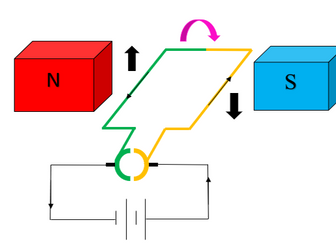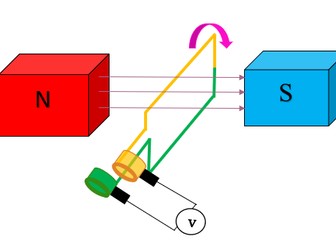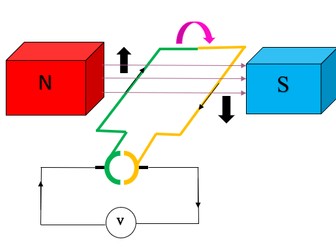DC Motor GCSE AQA Physics 9-1 PowerPoint
<p>For GCSE AQA Physics (and as an introduction to AQA A-level Physics)<br />
Parts of DC motor<br />
Explains why forces occur on the coil<br />
Step by step explanation of the forces occurring on the coil at each position<br />
Explains purpose of split ring commutator<br />
Key points to learn for DC motor</p>





